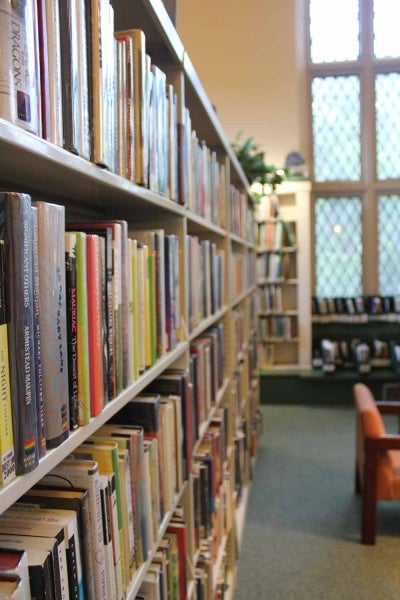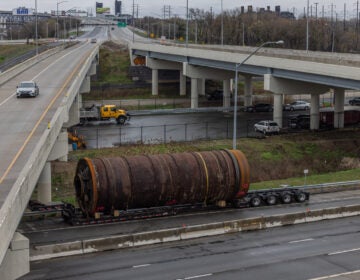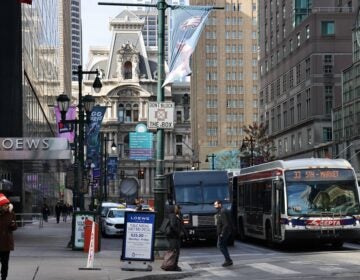East Falls presentation addresses the obstacles and opportunities at Philadelphia’s struggling libraries
Philadelphia’s public libraries aren’t dead. And they aren’t dying either. In fact, they are more vibrant and important than ever.
That’s the message that Senior Associate of the Pew’s Philadelphia Research Initiative, Emily Dowdall, is taking on tour. Her first stop to present the findings of the Pew research report “The Library in the City: Changing Demands and a Challenging Future” was held in a lower-level multipurpose room of the Falls of the Schuylkill Branch Library in East Falls Wednesday night.
The presentation, which included a brief outline of the major findings of the report with recommendations, was attended by nearly a dozen community members and was followed by a short informal discussion.
Released in March, the report compares Philadelphia’s library system to 14 peer institutions nationwide. It found that the Free Library has been slower than some of its big-city counterparts to adapt to the growing and varied demands of its urban population.
The results
Of adult Philadelphians, 51 percent said they visited the library in the past 12 months. But community members have come to depend on the library for more than its traditional roles. It has become a “one-stop multi-purpose community center” said Dowdall, often complementing numerous public agencies, organizations and institutions.
In the past five years, computer usage at the libraries increased 80 percent. One third of library users said they sought library resources for health information, while in the wake of the recession, hundreds of thousands sought assistance in finding employment. And every year, nearly 60,000 children rely on the after-school programming.
Included in the study were libraries with one or more similarities to Philadelphia: population size, number of libraries, geography and so on. Many have been more successful in their attempts to adapt to the needs of their residents, Dowdall explained of the report’s findings.
One of the main setbacks in the Free Library’s efforts to adapt to 21st century demands has been the extreme budget cuts caused by the recession between 2008-2010.
On average, government funding for the 15 systems studied fell 10 percent during this time. The cuts were deeper in Philadelphia at 19 percent – nearly double the national average. Meanwhile, private funding, on which the city’s libraries also rely heavily, fell seven percent.
The ripple effect of budget cuts
Yet despite controversial threats of closures, all branches of the Free Library remain open. Due to staff cuts and shortages, however, every branch except Parkway Central, the Lucien E. Blackwell West Regional, and the Library for the Blind and Physically Handicapped, has been plagued by unscheduled temporary closures.
In 2008, the combined number of unexpected closure hours was 690, with only 51 of those due to staff shortages (the remainder due to maintenance issues). In 2010, the number reached 8,000 with more than three-quarters of those closure hours due to staff shortages.
This shocking number led some in the audience to question if other cities had similar drastic temporary closures. In fact, none had experienced anywhere near the amount. Detroit, for instance, closed branches and reduced hours and was able to maintain regular hours. In Philadelphia, an administrative minimum staffing rule requires that at least four employees are present to open a branch, including one municipal guard. This rule was implemented after a string of violent crimes.
Dowdall explains that the temporary closures through 2010 have had long term deleterious effects, even though the number of hours decreased by half in 2011 and again in 2012.
“You can imagine that this has an impact on visits to the library, because when you go to your library when it’s supposed to be open and it’s not, you may be less likely to try again the next time.”
Reevaluating and prioritizing services
After releasing the report in March, the researchers and writers, including Dowdall and Claire Shubik-Richards, and project director Larry Eichel have presented their findings and recommendations to the Mayor’s Office, City Council, both boards of the library and senior library staff.
Some of the recommendations have come directly from successful implementation of ideas in other city systems. The report recommends prioritizing services, including a focus on teens and children.
The report also suggests reevaluating branch hours. For many people elsewhere, Dowdall explains, weekends are “the bread and butter” for visiting. Yet in Philadelphia most branches have reduced hours on Saturday, and all but the main branches are closed on Sunday.
Dowdall explained that securing sustainable funding and simplifying the two-board governing structure are important challenges that the system faces. The goal of the report is to inform policy-makers and the public of the opportunities to help the libraries in Philadelphia succeed and flourish in a time when they are most important to the communities they serve.
Emily Dowdall will make another presentation on “The Library in the City” at the Northeast Regional branch this Saturday, June 9 at 1 p.m.
WHYY is your source for fact-based, in-depth journalism and information. As a nonprofit organization, we rely on financial support from readers like you. Please give today.








